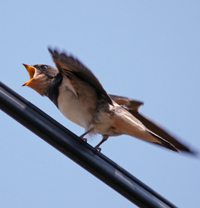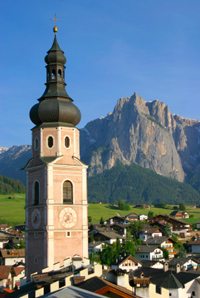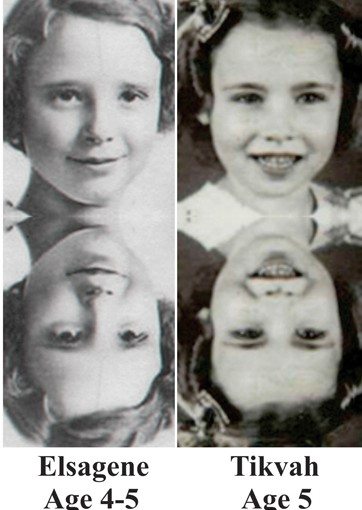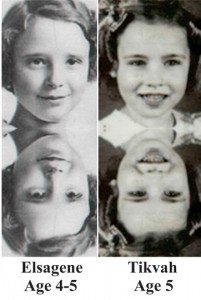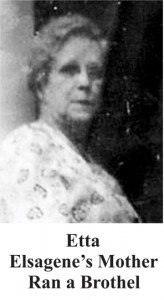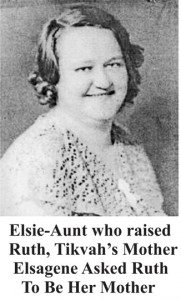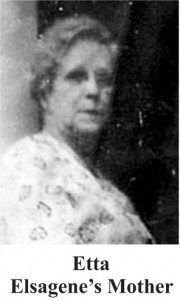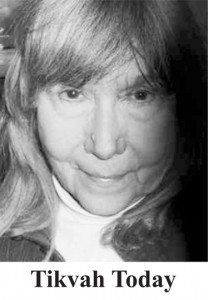 How derived: Past Life Memories in Childhood
How derived: Past Life Memories in Childhood
Researchers: Ian Stevenson, MD, Erlander Harraldsson, PhD and L.P. Mehrota, PhD
From: Cases of the Reincarnation Type, Volume I, India, by Ian Stevenson, MD (pages 337-360)
Article by: Walter Semkiw, MD
The Lives of Bhimsen and Pitamah
The Tripathi twins, Bhimsen and Pitamah, were born in the village of Uncha Larpur in the Indian state of Uttar Pradesh, in 1935. Their father was Pandit Kali Shanker, a farmer, and their mother was named Ram Devi. The twins had an older brother whose name was Chandra. The family were Brahmins, the highest caste or social class of Indian culture. The twins very close to one another and went everywhere together.
Bhimsen was the more intelligent twin, who advanced in school up to the sixth grade. As he could read and write, in adulthood, he worked part-time as the secretary of the village of Uncha Larpur. Bhimsen was considered the more aggressive of the boys.
In contrast, Pitamah was considered more simple. He never went to school.
Though both twins were good-natured, they were known to be strong, brave and would not run from a fight when provoked. They kept a licensed gun in the home of their mother, Ram Devi, which was hung on a peg on a wall.
 Like their father, Bhimsen and Pitamah became farmers, along with their older brother, Chandra. When their father died, his will specified that his land be divided equally between his three sons.
Like their father, Bhimsen and Pitamah became farmers, along with their older brother, Chandra. When their father died, his will specified that his land be divided equally between his three sons.
Bhimsen married first and had 3 children. Pitamah married a year later and had one child.
The Murders of Bhimsen and Pitamah
In 1964, when the twins were about 40 years old, a land dispute erupted between them and men named Jagannath and Raja Ram, who lived in the neighboring town of Kurri, which was a 1 kilometer or about a half mile away from Uncha Larpur.
Jagannath had built an earthen dike on land that the twins considered their own. In retaliation, the twins knocked down the dike and then dammed up a stream that irrigated land owned by Jagannath and Raja Ram.
Jagannath and Raja Ram planned revenge on the twins. They pretended that they forgave Bhimsen and Pitamah for destroying their dike and blocking the stream that irrigated their land. Under the pretense of wanting to settle a separate financial matter, Jagannath and Raja Ram invited the twins to the home of Jagannath, in the nearby town of Kurri.
When Bhimsen and Pitamah arrived, their hosts were affectionate and gave the twins milk to drink. Suddenly, a number of men came into the room and attacked the twins. First, they threw a corrosive liquid, likely acid, into the eyes of the twins to blind them.
They then subdued the twins by tying them up with ropes. While the twins were on the floor, the men pressed down on their chests and stomachs with wooden poles. Poles placed across the twin’s necks were used to strangulate them.
The Bodies of Bhimsen and Pitamah are Thrown into a Well
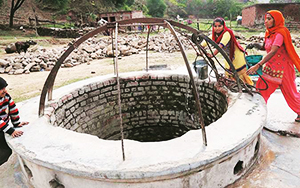 The attackers then threw the twins, Bhimsen and Pitamah, still bound with ropes, into a well. The twins were last seen on April 28, 1964.
The attackers then threw the twins, Bhimsen and Pitamah, still bound with ropes, into a well. The twins were last seen on April 28, 1964.
Four days later, on May 2, 1964, the decomposed bodies of the twins were discovered in the well. The police who pulled the bodies out of the well determined that the twins were killed by strangulation. By the time an autopsy was done, the bodies, exposed to the heat of India, were too far decomposed for a cause of death to be determined by the coroner.
The twins, Bhimsen and Pitamah, were thought to have been killed on or about on April 28, 1964. Jagannath was about 45 years of age when of the the twins were murdered.
The Murderers are Aquitted for Lack of Testimony and Evidence, then Brag About Their Deeds
Police arrested 9 known enemies of Bhimsen and Pitamah, who stood trial for the murder of the twins. Because these 9 defendants were likely involved in the murders, none would testify against each other. As such, without willing witnesses or other evidence, the 9 defendants were acquitted and went free.
Encouraged and emboldened by their acquittal, the participants of the murders of Bhimsen and Pitamah started to talk about their crime. They admitted that they had thrown a corrosive liquid into the eyes of the twins. They also revealed that they then used wooden poles to pin the bodies of the twins onto the floor. Wooden poles were then used to press on the throats of Bhimsen and Pitamah to suffocate them. The murderers then bragged about throwing the bodies of the twins into a well.
Bhimsen and Pitamah Reincarnate as Another Set of Twins-Ramoo and Rajoo
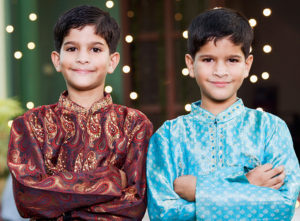 4 months later after Bhimsen and Pitamah were killed, in August 1964, another set of twins were born in the village of Sham Nagara, which is 16 kilometers or about 10 miles from Uncha Larpur, the past life home of Bhimsen and Pitahmah. There was a primitive road that ran between the villages of Uncha Larpur and Sham Nagara, that could only be traversed in good weather.
4 months later after Bhimsen and Pitamah were killed, in August 1964, another set of twins were born in the village of Sham Nagara, which is 16 kilometers or about 10 miles from Uncha Larpur, the past life home of Bhimsen and Pitahmah. There was a primitive road that ran between the villages of Uncha Larpur and Sham Nagara, that could only be traversed in good weather.
Sham Nagara had a population of only about 100. The twins’ father was Pan Ram Swaroop and their mother was named Kapuri.
Announcing Dreams involving Two Children
Kapuri had 2 dreams prior to the birth of her twin sons, in which 2 children were involved. Though Kapuri did not place much importance in these dreams, they may have been predicting that she would have twins.
Ramoo and Rajoo Want to Go to Their Past Life Home, Uncha Larpur
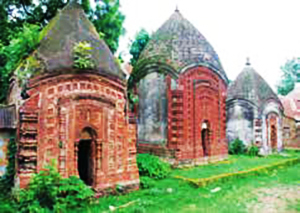 Their parents named their twins Ramoo and Rajoo. When they were 2 years old, they began to speak in an organized manner.
Their parents named their twins Ramoo and Rajoo. When they were 2 years old, they began to speak in an organized manner.
In the first indication that they remembered past lives, Ramoo and Rajoo ran off to the main highway in their town. When they were brought back to their house, their parents asked why they ran off. The twins answered that they were trying to get back to their home. The twins expressed a strong desire to go to Uncha Larpur before they said anything about their past lives.
Past Life Memories are Stimulated by the Twin’s Recognition of an Acquaintance from Uncha Larpur
At 3 years of age, the twins, Rajoo and Ramoo saw a man from the village of Uncha Larpur whose name was Shiv Narain. The young twins touched his feet in a sign of respect. The twins’ uncle chastised them for this act on an unknown stranger. They replied that they recognized this man from their past lives in Uncha Larpur.
The recognition of this man stimulated past life memories in the twins. In discussing their past incarnations, Rajoo and Ramoo often spoke together. When one started to make a statement, the other twin would finish the sentence. As such, it was often difficult to distinguish which twin said what.
Past Life Statements
 Ramoo and Rajoo made the following statements regarding their remembered past lives as Bhimsen and Pitamah:
Ramoo and Rajoo made the following statements regarding their remembered past lives as Bhimsen and Pitamah:
Rajoo and Ramoo said that in their past lives their names had been Bhimsen and Pitamah. More specifically, Ramoo said his name was Bhimsen, while Rajoo said that his name had been Pitamah.
Though Pitamah | Rajoo was considered the less intelligent twin in both lifetimes, Rajoo was the one who offered the most details of the twins’ past lives.
The twins said that in their past incarnations they had a brother named Chandra and that they lived in the village of Uncha Larpur.
The twins said that they had studied up to the sixth grade under a teacher named Thakur Tilak Singh, in village of Marhana. These statements were true for Ramoo, who was Bhimsen in a past life.
The twins said one of them had married a girl from Bahawalpur and the other had married a woman from Atrauli. Bhimsen | Ramoo had indeed married a woman from Bahawalpur, while Pitamah | Rajoo had married a girl from Atrauli.
The twins said that one of them had son named Netra Kishore, which was true for Bhimsen | Ramoo.
The twins said that one of them had a son named Drona, short for Dronacharya, which was true for true for Pitamah | Rajoo.
The twins said that they owned 60 bighas of land (there are about 7 bighas to an acre), which was essentially correct for the amount of land Bhimson and Pitamah had owned.
They said that one of them wore a ring, which was true of Bhimsen | Ramoo.
The twins said that they owned a licensed gun. Further, Rajoo said that the gun was placed on a peg on a wall in the room of their past life mother, Ram Devi. Rajoo added that a belt with bullet cartridges was also kept hanging on the wall near the gun. These statements were accurate, as the gun and cartridge belt owned by Bhimsen and Pitamah were indeed kept in the room of their mother, Ram Devi.
Rajoo and Ramoo Remember their Past Life Murders
 Rajoo was the first twin who spoke about their past life murders, stating that a village leader in Kurri named Jagannath, with his friend Raja Ram, killed the twins in their past lives.
Rajoo was the first twin who spoke about their past life murders, stating that a village leader in Kurri named Jagannath, with his friend Raja Ram, killed the twins in their past lives.
Rajoo said that in their past lives, they dismantled an irrigation trough that watered the fields owned by Jagannath and Raja Ram.
Rajoo said that Jagannath was angry at first about the destruction of the irrigation trough, but later became friendly. When the twins were invited to the home of Jagannath in Kurri. Rajoo said when they arrived, Jagannath sent the women of the house away. Rajoo said Jagannath was initially affectionate to the twins and gave Bhimsen and Pitamah milk to drink.
When they twins started to drink the milk, they were surrounded by a group of men who grabbed them. Rajoo added that the men threw acid into their eyes to blind them. The attacking men and then tied the twins up with ropes.
Rajoo said that his past life brother, Bhimsen, got loose from the ropes and escaped from the house, but returned when Bhimsen realized that his brother, Pitimah | Rajoo, was still in the house and was being killed. Rajoo added that another assailant was named Hori Lal.
These statements regarding the murders of the twins were accurate, based on what the murderers themselves told others after their trial ended in acquittal. Recall that there were 9 men who stood trial for the murder of the twins, including Jagannath, Raja Ram and Hori Lal.
Rajoo added that they, the past life twins, were then placed into sacks and were subsequently thrown into a well. Ian Stevenson noted that when the bodies were found in the well, they were not in sacks. Stevenson thought it was plausible that sacks were used to hide the bodies while they were being transported from Jagannath’s home in Kurri to the site of the well.
Most sacks in the area, used for transporting crops, have the name of the owner printed on them. In disposing the bodies of Bhimsen and Pitamah, it would be necessary to remove the sacks to avoid incrimination.
The twins continued to talk about their past lives at least up to 9 years of age.
 The Twin’s Parents Repress Ramoo and Rajoo’s Past Life Memories
The Twin’s Parents Repress Ramoo and Rajoo’s Past Life Memories
The parents of Ramoo and Rajoo made no attempts to verify their twins’ past life memories and never took them to Uncha Larpur, as there is a superstition in northern India that predicted grave misfortune to children who remember past lives. One such consequence included that these children would die young. As such, parents would repress children’s past life memories by gentle suppression or even by physical punishment, such as beating the child.
The parents of Ramoo and Rajoo thought it was appropriate to beat the twins whenever they started talking about their previous lives. When this did not work, they switched to the lesser demand that the children not talk about their past incarnations outside of the family. In addition, the twins’ parents and told them to deny remembering past lives if strangers asked. They made an exception for Ian Stevenson’s interviews
Another reason that the parents of Ramoo and Rajoo suppressed their sons’ past life memories was concern that the murderers of the past life twins could intervene and harm Ramoo and Rajoo to suppress testimony regarding the killings.
 Ramoo and Rajoo Spontaneously Recognize their Past Life Mother and Brother
Ramoo and Rajoo Spontaneously Recognize their Past Life Mother and Brother
Verification of the twins’ past life memories only occurred when those who knew Bhimsen and Pitamah heard about the past life recall of Ramoo and Rajoo. For example, Ram Devi, the past life mother, came to see the reincarnated brothers in Sham Nagara. Ramoo and Rajoo recognized her on sight and both the twins and Ram Devi wept when they met.
The older brother of Bhimsen and Pitamah, Chandra, also came to see Ramoo and Rajoo, who the twins also recognized on sight. In fact, Chandra was a primary source of verifications of the reincarnated twins’ past life memories.
Ramoo and Rajoo Confront their Past Life Murderers
Just as their parents feared, a number of the alleged murderers came to Sham Nagara to meet Ramoo and Rajoo, who the twins did recognize. Stevenson speculated that the murderers must have been lured by a combination of curiosity and anxiety. Stevenson was not able to get information on how this meeting between Ramoo and Rajoo and their past life murderers went, but Stevenson noted it could not have been pleasant.
Past Life Behaviors and Abilities
 Ramoo was considered the more intelligent twin. In contrast, Rajoo was assessed to be simple. This corresponds to the natures of the past life twins, as Bhimsen | Ramoo was more intelligent and went to school, where he learned to read and write. Pitabah | Rajoo, on the other hand, never went to school. It is interesting that that the twin who was considered less intelligent, Rajoo, was on the one who first accessed past life memories.
Ramoo was considered the more intelligent twin. In contrast, Rajoo was assessed to be simple. This corresponds to the natures of the past life twins, as Bhimsen | Ramoo was more intelligent and went to school, where he learned to read and write. Pitabah | Rajoo, on the other hand, never went to school. It is interesting that that the twin who was considered less intelligent, Rajoo, was on the one who first accessed past life memories.
Ramoo and Rajoo were constantly together, just as were Bhimsen and Pitamah, and they showed much affection for each other. One would not eat unless the other was also present to share the meal. If one twin went somewhere by himself, the other would call him to come back.
Ramoo and Rajoo also had the tendency to confront a situation aggressively, much like Bhimsen and Pitamah did. As an example, when a low-caste person, who knew Bhimsen and Pitamah, traveled from Uncha Larpur to Sham Nagara meet these reincarnated twins, this low-caste person taunted the twins regarding their defeat in a past life brawl or dispute. Ramoo and Rajoo then became furious and rushed towards their antagonist and exclaimed: “God has made a small, but we can still devour you.”
Another incident in which the young twins showed bravado occurred when a villager from Uncha Larpur came to Sham Nagara to meet the brothers. Ramoo and Rajoo recognized this person, who they apparently had a past life quarrel with.
Ramoo ran up to this person and shouted: “Why have you come here?” The visitor replied with an insulting remark and Ramoo then picked up a brick to throw at the visitor, but someone intervened and prevented Ramoo from launching this weapon. Recall that Bhimsen | Ramoo was the more aggressive of the past life twins, demonstrating a parallel in temperament.
Ramoo and Rajoo Meet their Past Life Sons and Act in a Paternal Manner
 When the reincarnated young twins met their past life sons, they took on a paternal attitude.
When the reincarnated young twins met their past life sons, they took on a paternal attitude.
Their past life children were addressed by the reincarnated twins as “sons.” They also said that Bhimsen’s son should occasionally pay a visit to the native village of Bhimsen’s wife.
When the past life sons told the reincarnated twins that their past life house had decayed and had become decrepit, the twins instructed their past life sons to rebuild the house with proper care.
Past Life Birthmarks
Ramoo and Rajoo had pigmented or dark streaks, about 2 millimeters wide, that ran horizontally across their lower chests and abdomens. Ramoo had 5 such marks, while Rajoo had 2 marks. Their mother, Kapuri, said that these dark, horizontal streaks were present from birth.
Ian Stevenson speculated that these birthmarks could have been due to the ropes used to tie up Bhimsen and Pitimah. Alternately, the birthmarks could have resulted from the poles used to press the Bhimsen and Pitimah against the floor and suffocate the twins.
Ian Stevenson, MD Determines the Families in these Reincarnation Cases Had No Prior Contact
Stevenson noted though the village of the past life twins, Uncha Larpur, and that of the reborn twins, Sham Nagara, were only 10 miles apart, he found that there was no social connection or any interactions between the two families before Ramoo and Rajoo spontaneously started talking about their past lives.
Chandra, the older brother of Bhimsen and Pitamah, told Stevenson that he and his family had never been to Sham Nagara prior to the emergence of the past life memories of Ramoo and Rajoo, and that they had no friends or family members in Sham Nagara.
 In sum, Ian Stevenson concluded that Ramoo and Rajoo had no way to know about Bhimsen and Pitamah through normal means.
In sum, Ian Stevenson concluded that Ramoo and Rajoo had no way to know about Bhimsen and Pitamah through normal means.
Principles of Reincarnation and Understanding Past Lives
Planning Lifetimes and Relationships Renewed through Reincarnation: The twins Bhimsen and Pitamah reincarnated as the twins Ramoo and Rajoo. These cases demonstrate the extraordinary ability of souls to plan lifetimes to be reincarnated with loved ones.
Birthmarks Associated with Past Lives: Ian Stevenson hypothesized that the horizontal pigmented lines that Ramoo and Rajoo were born with on their chests and abdomens reflected marks made by ropes used to tie up Bhimsen and Pitamah, or the poles used to pin them to the ground.
 Spirit Beings in Reincarnation Cases: The mother of Ramoo and Rajoo, Kapuri, had dreams before they were born in which two children were involved, possibly foreshadowing the birth of her twins. It appears that from the spirit world, Bhimsen and Pitamah where announcing that they would be reborn as the children of Kapuri.
Spirit Beings in Reincarnation Cases: The mother of Ramoo and Rajoo, Kapuri, had dreams before they were born in which two children were involved, possibly foreshadowing the birth of her twins. It appears that from the spirit world, Bhimsen and Pitamah where announcing that they would be reborn as the children of Kapuri.
Split Incarnation or Parallel Lives: Ramoo and Rajoo were born only 4 months after Bhimsen and Pitamah were murdered. If souls are involved in the process of conception, which I believe is true, then the souls of Bhimsen | Ramoo and Pitamah | Rajoo were animating two bodies at a time.





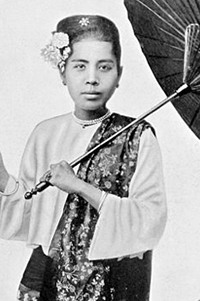




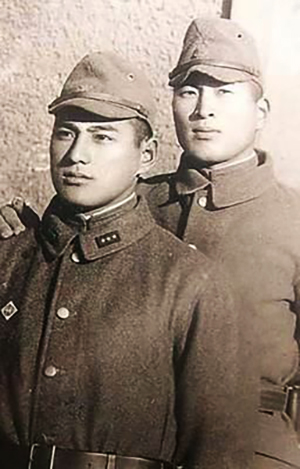


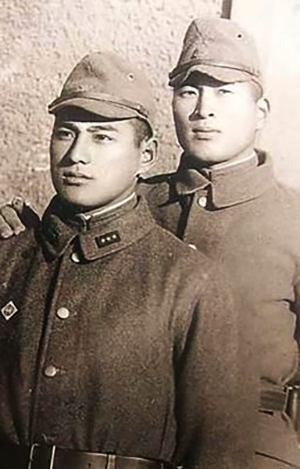
















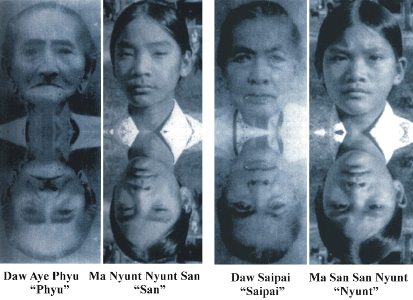

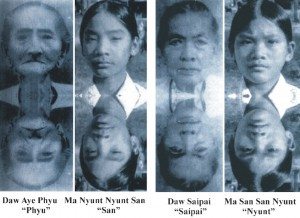
 Think of your life as an extended vacation that you plan in advance. You decide who you want and need to see, where you want to go and what activities you would like to participate in. You coordinate your itinerary with the people you are to rendezvous with. You, your karmic friends and loved ones all agree to the plan before you are born.
Think of your life as an extended vacation that you plan in advance. You decide who you want and need to see, where you want to go and what activities you would like to participate in. You coordinate your itinerary with the people you are to rendezvous with. You, your karmic friends and loved ones all agree to the plan before you are born.